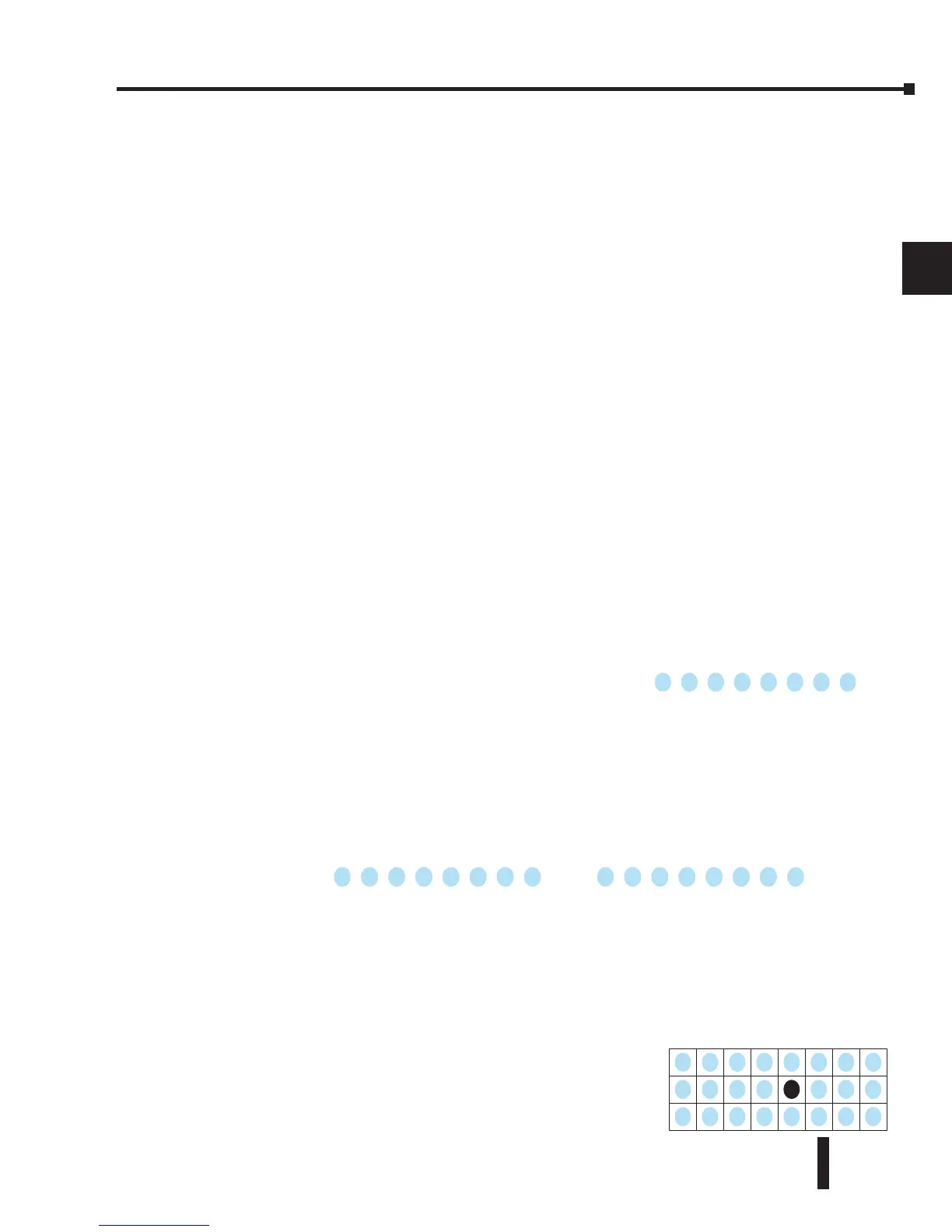DL205 User Manual, 4th Edition, Rev. D
3-35
Chapter 3: CPU Specifications and Operations
1
2
3
4
5
6
7
8
9
10
11
12
13
14
A
B
C
D
PLC Numbering Systems
If you are a new PLC user or are using DirectLOGIC
PLCs for the first time, please take a moment to study
how our PLCs use numbers. You’ll find that each PLC
manufacturer has its own conventions on the use of
numbers in their PLCs. Take a moment to familiarize
yourself with how numbers are used in DirectLOGIC
PLCs. The information you learn here applies to all our
PLCs.
As any good computer does, PLCs store and manipulate numbers in binary form: ones and
zeros. So why do we have to deal with numbers in so many different forms? Numbers have
meaning, and some representations are more convenient than others for particular purposes.
Sometimes we use numbers to represent a size or amount of something. Other numbers refer
to locations or addresses, or to time. In science we attach engineering units to numbers to give
a particular meaning (see Appendix H for numbering system details).
PLC Resources
PLCs offer a fixed number of resources, depending on the model and configuration. We use
the word “resources” to include variable memory (V-memory), I/O points, timers, counters,
etc. Most modular PLCs allow you to add I/O points in groups of eight. In fact, all the
resources of our PLCs are counted in octal. It’s easier for computers to count in groups of eight
than ten, because eight is an even power of two.
Octal means simply counting in groups of eight.
In the figure to the right, there are eight circles.
The quantity in decimal is “8,” but in octal it is
“10” (8 and 9 are not valid in octal). In octal,
“10” means 1 group of 8 plus 0 (no individuals).
In the figure below, we have two groups of eight circles. Counting in octal we have “20.”items,
meaning two groups of eight, plus zero individuals Don’t say “twenty,” say “two–zero octal”.
This makes a clear distinction between number systems.
After counting PLC resources, it’s time to access PLC resources (there’s a difference). The CPU
instruction set accesses resources of the PLC using octal addresses. Octal addresses are the
same as octal quantities, except they start counting at zero. The number zero is significant to a
computer, so we don’t skip it.
Our circles are in an array of square containers to the right.
To access a resource, our PLC instruction will address its
location using the octal references shown. If these were
counters, “CT14” would access the black circle location.
1482
0402
